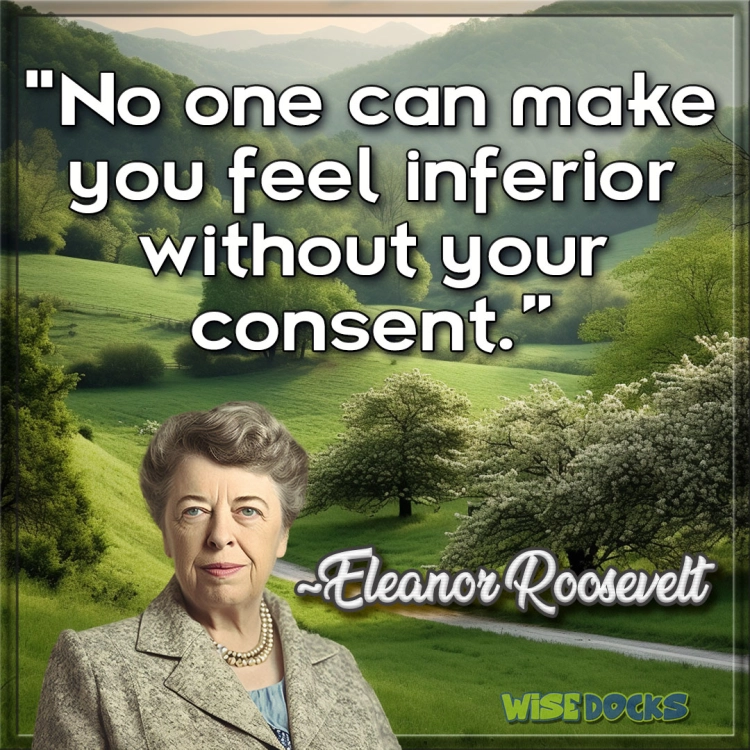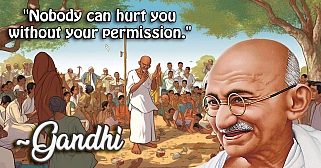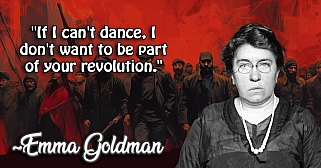Eleanor Roosevelt: A Life of Courage, Compassion, and Change

Eleanor Roosevelt
Eleanor Roosevelt was no ordinary First Lady. Born into wealth and privilege, she could have lived a life of leisure. Instead, she chose a life of service, activism, and fierce advocacy for human rights. From the time she first entered the public eye to her death in 1962, Eleanor redefined what it meant to be a political figure and a woman in power. This is the story of a woman who transcended expectations, becoming one of the most influential figures of the 20th century.

Early Life and Struggles
Born on October 11, 1884, in New York City, Anna Eleanor Roosevelt was raised in a world of wealth and social prominence. Her father, Elliott Roosevelt, was the younger brother of future President Theodore Roosevelt, and her mother, Anna Hall Roosevelt, was a member of the elite Livingston family. Despite these advantages, Eleanor's early life was fraught with difficulty.
Her mother was a beautiful and socially adept woman, but she was often critical of Eleanor, who she saw as plain and awkward. Eleanor internalized her mother's criticisms, developing insecurities that would haunt her throughout her life. However, her relationship with her father was different. Elliott Roosevelt adored Eleanor and nicknamed her "Little Nell." He encouraged her curiosity and intellect, fostering a close emotional bond that provided some respite from her mother's harshness.
Unfortunately, this solace was short-lived. Eleanor's father struggled with alcoholism and mental health issues, and he was largely absent from her life. In 1892, when Eleanor was just eight years old, her mother died of diphtheria. Her father died two years later, leaving Eleanor and her two younger brothers as orphans. Eleanor was sent to live with her maternal grandmother in Tivoli, New York. It was a cold and strict household, and Eleanor felt isolated and lonely.

Finding Her Strength
In 1899, Eleanor was sent to Allenswood Academy, a prestigious boarding school outside London. It was here, under the tutelage of the school’s headmistress, Marie Souvestre, that Eleanor began to come into her own. Souvestre recognized Eleanor’s intellectual potential and encouraged her to think independently and develop her voice. The experience was transformative for Eleanor, helping her build confidence and independence. Allenswood broadened her horizons, instilling in her a lifelong love of learning and a commitment to social justice.
After returning to New York at the age of 18, Eleanor made her social debut, but she found the world of high society vapid and unfulfilling. In 1902, she became engaged to her distant cousin Franklin Delano Roosevelt, whom she had met years earlier. They were married in 1905, with none other than President Theodore Roosevelt giving the bride away.
Franklin and Eleanor’s marriage was both a partnership and a challenge. Franklin was charming, outgoing, and politically ambitious, while Eleanor was shy, introspective, and uncomfortable in the spotlight. Early in their marriage, Eleanor took on the traditional role of wife and mother, giving birth to six children, one of whom died in infancy.
The Emergence of a Public Figure
Eleanor’s life took a dramatic turn in 1918 when she discovered that Franklin had been unfaithful to her. He had been having an affair with her social secretary, Lucy Mercer. The revelation devastated Eleanor, and she offered Franklin a divorce. However, after intervention from Franklin's mother, Sara Delano Roosevelt, the couple decided to stay together for the sake of Franklin’s political career. While their marriage endured, it was never the same. Eleanor and Franklin’s relationship evolved into more of a political partnership than a traditional marriage.
It was during this time that Eleanor began to carve out a public role for herself. She became active in the League of Women Voters, the Women’s Trade Union League, and the Democratic Party. She also worked with the American Red Cross during World War I, becoming increasingly involved in social reform and public service.
In 1921, Franklin was stricken with polio, which left him paralyzed from the waist down. While Franklin struggled to cope with his disability, Eleanor became his eyes and ears, traveling across the country and reporting back to him about political and social issues. She played an essential role in keeping Franklin’s political ambitions alive, helping him eventually become Governor of New York and, in 1933, President of the United States.

First Lady of the World
When Franklin was elected President in 1933, Eleanor became First Lady, a role that she redefined in unprecedented ways. Prior to Eleanor, First Ladies were expected to be gracious hostesses, staying out of politics and remaining largely in the background. Eleanor, however, had no intention of playing that role.
She held regular press conferences, wrote a daily syndicated newspaper column called “My Day,” and traveled extensively around the country, often visiting areas affected by the Great Depression. Eleanor’s activism was bold and unapologetic. She advocated for workers’ rights, civil rights, women’s rights, and social justice. Her willingness to speak out on controversial issues earned her both admirers and critics.
One of her most significant contributions during this time was her involvement in civil rights. In 1939, the renowned African American singer Marian Anderson was denied the opportunity to perform at Constitution Hall in Washington, D.C., by the Daughters of the American Revolution because of her race. Eleanor resigned from the DAR in protest and helped arrange for Anderson to sing at the Lincoln Memorial instead. The concert drew a crowd of 75,000 people and became a powerful symbol of the fight against racial discrimination.
Throughout Franklin’s presidency, Eleanor used her position to push for social change. She was a tireless advocate for the New Deal programs that sought to alleviate the suffering caused by the Great Depression, and she often pushed Franklin to take more progressive stances on civil rights and social justice. While Franklin’s political pragmatism sometimes held him back from embracing more radical reforms, Eleanor was not afraid to voice her opinions, even when they clashed with those of her husband.
World War II and Beyond
As the world descended into the chaos of World War II, Eleanor’s role as First Lady expanded even further. She traveled to Europe and the Pacific to visit American troops and boost morale, earning the admiration of soldiers and military leaders alike. Her visits to hospitals, refugee camps, and military bases allowed her to see the human toll of the war up close, deepening her commitment to peace and human rights.
In 1945, just as the war was drawing to a close, Franklin died suddenly of a cerebral hemorrhage. Eleanor was devastated by his death, but she did not retreat from public life. Instead, she embarked on a new phase of her career that would solidify her legacy as a champion of human rights.
After Franklin’s death, Eleanor was appointed by President Harry Truman as a delegate to the newly formed United Nations. She became the chair of the UN Commission on Human Rights and played a pivotal role in drafting the Universal Declaration of Human Rights, a landmark document that set forth the rights and freedoms to which all people are entitled. The declaration was adopted by the UN General Assembly in 1948 and remains one of the most important human rights documents in history.
Eleanor’s work with the United Nations earned her the title “First Lady of the World,” a reflection of her global influence and tireless dedication to justice and equality. She continued to travel extensively, advocating for civil rights, women’s rights, and international peace until her death in 1962.
A Legacy of Compassion and Courage
Eleanor Roosevelt’s life was marked by both personal challenges and extraordinary achievements. She overcame the insecurities and hardships of her early years to become one of the most influential women in history. Throughout her life, she was guided by a deep sense of compassion and a commitment to justice. Whether advocating for the poor, fighting against racial discrimination, or championing human rights on the world stage, Eleanor never wavered in her belief that every person deserved dignity and respect.
Her legacy lives on in the countless lives she touched and the causes she championed. Eleanor Roosevelt’s courage, compassion, and relentless pursuit of a better world serve as a powerful reminder of the impact one person can have. She once said, “You must do the thing you think you cannot do,” and throughout her life, she exemplified this belief, taking on challenges that seemed insurmountable and pushing the boundaries of what was possible for women and for society.
Eleanor Roosevelt’s story is one of resilience, vision, and a lifelong commitment to making the world a more just and compassionate place. She showed us that leadership is not about holding power but about using one’s voice and position to lift others up. Today, more than half a century after her death, Eleanor Roosevelt remains an enduring symbol of the power of compassion and courage in the face of adversity.


